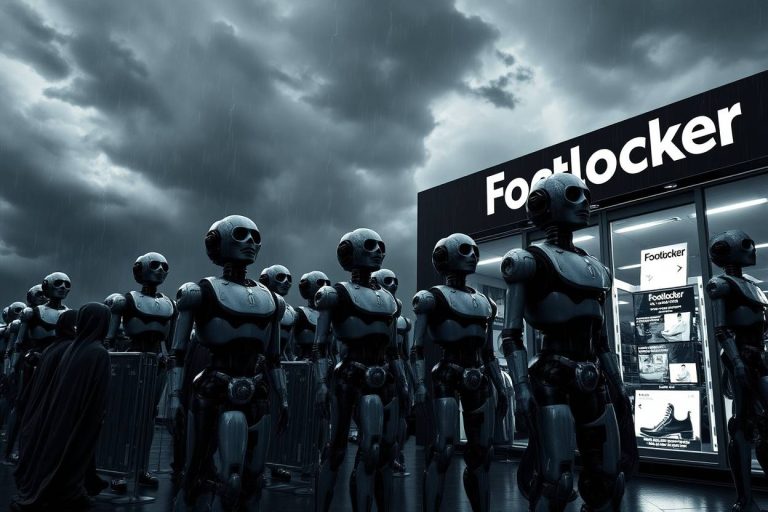Agentic AI Fundamentals: A Guide to Cognitive Architectures

Agentic AI Fundamentals are the foundational design patterns and cognitive architectures that enable an AI system to move from passive prediction to autonomous, goal-directed action. These core concepts are the “building blocks” that allow developers to construct intelligent agents capable of planning, reasoning, and interacting with their environment.
- Agentic AI is defined by autonomous action, not just prediction. Its fundamental purpose is to execute goal-oriented tasks in an environment.
- All agents operate on a “Perceive-Think-Act” cycle. This loop of observing, reasoning, and acting is the core operational pattern of any agent.
- An agent’s intelligence is determined by its planning method. The sophistication ranges from a simple “Chain-of-Thought” to a more advanced “Tree-of-Thoughts” that explores multiple strategies.
- Tools are what connect an agent’s reasoning to reality. An agent’s capabilities are defined and limited by the set of software tools (APIs, web search) it can use to execute its plans.
- Self-correction is the key to robust autonomy. The ability to recognize a failed action and formulate a new plan is what separates a brittle bot from a resilient agent.
Understanding these intelligent agent principles is essential for any business leader or technologist aiming to build or deploy autonomous systems. This guide provides a practical analysis of the key architectural concepts—from state management to planning and self-correction—that define how modern agents “think” and operate.
What are Agentic AI Fundamentals?

Agentic AI Fundamentals are the core concepts that define an agent’s ability to act autonomously. They represent a critical shift in AI development, focusing not just on perception or prediction, but on execution and goal achievement.
The Key Shift: From “Knowing” to “Doing”
The main difference lies in the system’s purpose.
- Traditional AI is primarily focused on perception and prediction—recognizing an image, transcribing speech, or forecasting a sales trend. Its job is to “know” something about the world.
- Agentic AI is focused on planning and execution. Its job is to “do” something in the world by using its knowledge to formulate and carry out a sequence of actions.
The Foundational Pattern: The Agentic Loop
At its core, every agent operates on a continuous feedback loop that allows it to perceive, process, and act. This concept is often modeled after the OODA loop (Observe, Orient, Decide, Act), a framework originally developed for military strategy.
How this translates to modern agentic frameworks:
- Observe (Perception): The agent uses its sensors (e.g., APIs, web scrapers, cameras) to gather information about the current state of its environment.
- Orient (State Management): The agent updates its internal “world model” with this new information. This is where it makes sense of the raw data and integrates it with its existing knowledge.
- Decide (Planning): The agent’s reasoning engine formulates a plan or chooses the next best action to move closer to its goal.
- Act (Tool Use): The agent uses its actuators (e.g., writing to a database, sending an email, executing a command) to affect its environment.
This cycle repeats continuously, allowing the agent to make iterative progress towards its objective.
Core Concept 1: State and World Models
An agent’s ability to make intelligent decisions depends entirely on its understanding of the world. This understanding is known as its “state” or “world model.”
Why is state management a fundamental challenge?
A key challenge in AI agent architecture is that the agent must maintain an accurate internal representation of an external world that is constantly changing. The agent’s internal model can quickly become “stale” or out of sync with reality, leading to flawed decisions.
Common Approaches to State Management
- Short-Term Memory: This is typically handled by the context window of a Large Language Model (LLM). It allows the agent to remember the immediate history of its interactions, which is crucial for holding a coherent conversation or executing a short sequence of tasks.
- Long-Term Memory: For an agent to have persistent knowledge, it needs a long-term memory system. This is often implemented using a vector database and a technique called Retrieval-Augmented Generation (RAG), which allows the agent to search and retrieve information from vast stores of documents or past experiences.
- Structured Memory: For facts that must be 100% accurate (like a customer’s account number), agents can use traditional databases or knowledge graphs. This provides a reliable source of truth that is not subject to the probabilistic nature of an LLM.
Core Concept 2: Planning and Decomposition
An agent’s intelligence is demonstrated by its ability to plan. This is a core concept in autonomous AI concepts that separates agents from simple bots.
What is “Task Decomposition”?
Task decomposition is the process of breaking down a high-level, ambiguous goal into a concrete sequence of smaller, executable sub-tasks. For example, the goal “Plan a team trip” is decomposed into sub-tasks like “Find flights,” “Book hotel,” and “Send invitations.”
Key Planning Methodologies
- Chain-of-Thought (CoT): This is the most straightforward planning method. The LLM “thinks out loud,” generating a series of intermediate reasoning steps that form a linear plan to guide its final action.
- Tree-of-Thoughts (ToT): This is a more advanced method where the agent explores multiple different reasoning paths (the “branches” of the tree) simultaneously. It can then evaluate these different plans and choose the one most likely to succeed.
- Graph-of-Thoughts (GoT): This is the most flexible and powerful approach. It allows the agent to merge different lines of thought, creating a graph structure. This enables more complex, cyclical reasoning, where the agent can loop back and refine earlier steps in its plan based on new information.
Core Concept 3: Tool Use and Grounding
An agent’s plan is useless if it cannot act upon it. Tool use is the mechanism that connects the agent’s abstract reasoning to the real world.
What is “Grounding” in Agentic AI?
“Grounding” is the process of connecting an agent’s language-based reasoning to concrete actions and real-world data through the use of tools. Tools “ground” the agent’s knowledge in reality, preventing it from being a purely theoretical reasoner. Without tools, an agent can only think; with tools, it can do.
The Mechanics of Tool Selection
Modern LLMs for agents are specifically trained for tool use through a process called Function Calling. The LLM can recognize when a task requires an external tool and can format its output as a structured command (typically a JSON object) that can be used to call that tool’s API. For example, it learns that a question about the weather requires a call to a weather_API tool.
The “Tool Library” Concept
An agent’s capabilities are defined and limited by the set of tools it has access to. A simple agent might only have a set of rules to follow, while a more complex business agent might have a library of tools including a CRM_API, a database_query tool, and a code_interpreter.
Core Concept 4: Self-Critique and Refinement
A truly autonomous agent must be able to handle failure. Self-correction is a critical capability for operating in the unpredictable real world.
Why is self-correction a critical agentic capability?
The real world is not perfect. APIs fail, websites change, and initial plans are often flawed. An agent must be able to recognize when one of its actions has produced an error or an undesirable result and then adapt its plan accordingly.
The “Critique-Refine” Loop
- How it works: After an agent takes an action, it (or a separate “critic” agent) evaluates the outcome against the desired goal. If there is a discrepancy or an error, the agent’s reasoning engine is triggered to formulate a new, alternative plan.
- Practical Example: An agent attempts to call an API and receives a “401 Unauthorized” error. It analyzes this error message (critique), reasons that its authentication token has likely expired, and formulates a new plan (refinement): its next action will be to first call the authentication API to get a new token before retrying the original request.
The Unifying Framework: How These Fundamentals Create an Agent
These four fundamental concepts of AI Agents: State Management, Planning, Tool Use, and Self-Critique, are not independent. They are the interconnected components of a complete AI agent architecture. An agent’s overall autonomy and intelligence are determined by the maturity of each of these components. Improving any one of them, such as providing the agent with better tools or a more sophisticated planning methodology, leads to a more capable and reliable system. These Agentic AI fundamentals are the essential principles behind the next generation of autonomous technology.




